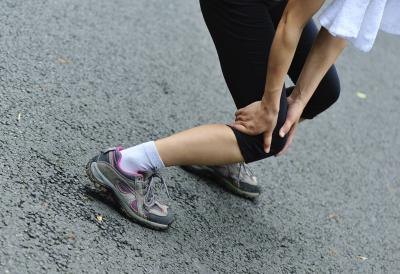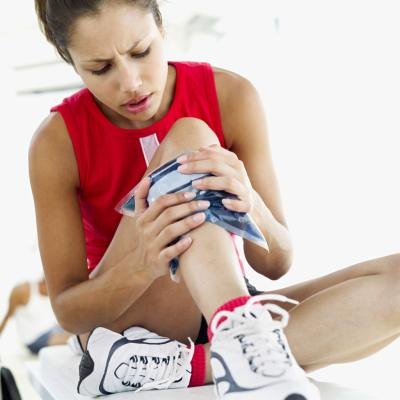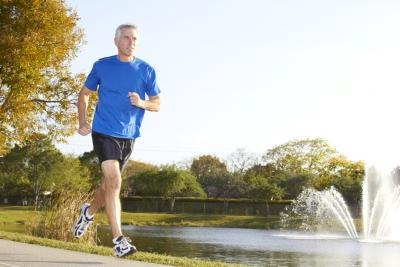
Nothing ruins that runner's high quicker than a twinge of muscle soreness. Soreness can be a sign of injury, but for new runners it may simply be delayed onset muscle soreness. Ice and heat are among the more popular treatment options for post-run muscle soreness. Whether you should use ice or heat depends upon the nature of your symptoms. While applying ice or heat may ease your symptoms, such treatments do not speed up the healing process. If soreness worsens or persists beyond 48 hours, consult your doctor.
Muscle Soreness Causes

New runners, especially those running frequent downhill routes, may be more prone to delayed onset muscle soreness, which is triggered by novel muscle movement and eccentric loading of muscles. According to the American College of Sports Medicine, completing a single exercise session that triggers soreness offers a protective effect when performing that same exercise in the future.
While soreness after a run often resolves on its own with minimal treatment, experiencing pain after a run may be a sign of a muscle or joint injury. Overexertion or poor form can trigger muscle pain. If you experience debilitating pain or extreme swelling, seek prompt medical attention.
While soreness after a run often resolves on its own with minimal treatment, experiencing pain after a run may be a sign of a muscle or joint injury. Overexertion or poor form can trigger muscle pain. If you experience debilitating pain or extreme swelling, seek prompt medical attention.
Benefits of Ice

Applying ice helps reduce inflammation and may offer pain relief because it numbs the affected area. By restricting blood flow, ice treatment can help reduce swelling. Ice is most effective for acute injuries and should be applied up to six times within the first 48 hours for 15 to 20 minutes at a time. Do not place an ice pack directly on the skin. Wrap it in a towel to prevent tissue damage.
Benefits of Heat

Heat increases blood flow. It can help relieve the soreness caused by stiff muscles, and it may reduce the risk of muscle spasms. Heat may be particularly effective in treating the neck and back. If you are dealing with mild, chronic soreness, applying heat after your run may help ease symptoms. Heat treatment can be applied in moist form with a warm towel or in dry form with a heating pad.
Proceed with Caution

Ice and heat treatment may not be appropriate for those with circulation issues and should not be used on open wounds. Use caution to prevent burns when using heat treatment. Using heat can also increase inflammation, exacerbating some injuries.
RICE -- rest, ice, compression and elevation -- is a typical approach for treatment of muscle soreness.
Allow yourself sufficient healing time before running again. While engaging in warm-up exercises such as jogging or jumping jacks may not prevent delayed onset muscle soreness, they can prepare muscles for physical activity and reduce risk of injury.
RICE -- rest, ice, compression and elevation -- is a typical approach for treatment of muscle soreness.
Allow yourself sufficient healing time before running again. While engaging in warm-up exercises such as jogging or jumping jacks may not prevent delayed onset muscle soreness, they can prepare muscles for physical activity and reduce risk of injury.





No comments:
Post a Comment